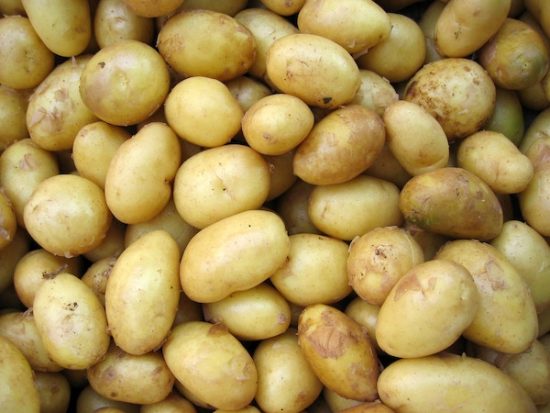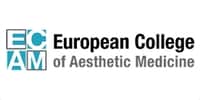
Updated May 2023
You’ve probably heard of hyaluronic acid (HA). If you use skincare, you may already use products containing it. Hyaluronic acid (HA) has become quite the buzzword in the aesthetic and anti-ageing industry and is known for its hydrating and plumping effects on the skin. Furthermore, HA is known to boost collagen and elastin, improve skin tone and texture and can be used daily.
HA dermal filler is a safe filler, found naturally in the body, that can lift and smooth wrinkles, helping to reverse the appearance of ageing. And it’s the dermal filler we use in our clinic for smile line and tear trough treatment to fill deep lines and reduce wrinkles. We can also use HA dermal fillers to enhance lip size and shape, and augment cheekbones, jawline and chin, to create more defined contours and a youthful, attractive facial shape. But did you know that hyaluronic acid is also in food, and your body can naturally produce more if you adjust your diet?
It’s easy to take the shortcut of having dermal fillers to get a rejuvenated, more youthful appearance. But if you don’t feel ready for needles and anaesthetics, going the natural route with a healthy balanced diet full of HA-rich food and taking hyaluronic acid supplements will undoubtedly support your skin health. Don’t be afraid of the “acid” in its name — HA is a naturally occurring carbohydrate or sugar found in the body that provides moisture and firmness to the skin and lubricates the joints!
One of the reasons we develop wrinkles as time goes by is because of a reduction of natural hyaluronic acid as we age. In this post, we explore the skin benefits of hyaluronic acid and how the foods you eat and hyaluronic acid supplements could make a significant difference in the way your skin looks and feels.
We all know that a balanced, healthful diet does wonders for our skin, and a diet lacking in nutrients can wreak havoc on it. The skin is our largest organ, and it’s greatly affected by what we consume. The age-old saying, “you are what you eat”, is 100% true! Certain foods are rich in hyaluronic acid, so it makes sense to add them to your diet to not only stay healthy but help your skin to stay in optimum condition.
If you want to increase the amount of hyaluronic acid in your body, you could start by adding these foods that contain hyaluronic acid to your diet. Plus, all these foods have the added benefit of being good for your general health. One easy way to ensure you get enough hyaluronic acid is to eat foods from the following groups:
• Soy — Some people are apprehensive about soy, and if you are concerned that it could increase your oestrogen levels, this is extremely unlikely. Soy has numerous health benefits and is one of the most effective foods for boosting natural hyaluronic acid.
Some ways to incorporate soy into your diet could include adding a few small chunks of tofu or edamame to salads and stir-fries — or you can even eat cubes of cooked tofu on their own as a healthy snack. Tofu is flavourless, so you will probably want to use some soy, tamari and miso for sauces and dressings.
If you fancy something more adventurous, try cooking vegetables with tempeh, a fermented soybean cake popular in Indonesia. If that’s all too much effort, adding soy sauce to your stir fry, rice, and even more traditional dishes like spaghetti bolognese is an easy way to incorporate soy into your diet.
• Citrus Fruits —There is bound to be at least one type of citrus fruit you like. The obvious contenders are oranges, lemons, limes and grapefruit, but there are so many others! All citrus fruits have the benefit of containing not only a high amount of immune-boosting vitamin C but also naringenin, which inhibits the breakdown of HA in the body.
It’s easy to add citrus fruits to your daily diet with a glass of freshly squeezed orange juice, a squeeze of lemon or lime into your water, or maybe try adding half a pink grapefruit to your breakfast or maybe experiment with some more unusual citrus fruits such as pomelos and kumquats.
Pomelos resemble an enlarged grapefruit yet are sweeter and don’t have the sharpness of grapefruit. Popular in Asian cooking, kumquats look like tiny oranges and are both sweet and sour. These fruits may be enjoyed complete with their skins, mixed into salads, or even cooked intact.
• Root Vegetables — Try increasing the amount of root vegetables you eat daily. Variety is vital to balanced nutrition. Several healthy root vegetables support hyaluronic acid production in the body, such as sweet potatoes, carrots, beetroot, radishes and root vegetables. As they are mainly carbohydrates, they are good alternatives to staple foods such as bread and rice. Plus, you can eat many root vegetables raw as snacks or in a salad.
All of these vegetables contain potassium, fibre and vitamins A, C, and B6, so their inclusion in your diet is an excellent way to boost your health while also adding healthy starch to your diet, which can provide energy.
• Green Leafy Vegetables — These vitamin-rich foods contain magnesium, which aids in producing hyaluronic acid in the body. Leafy greens contain potassium, magnesium, calcium, iron, vitamin B, vitamin K, and high amounts of antioxidants and do so much more than boost your skin health. Research has shown green leafy vegetables can support bone health, lower blood pressure and may reduce the risk of Type 2 diabetes and slow down cognitive decline as you get older.
For maximum benefits, try to eat green leafy vegetables like kale, lettuce, collard greens, bok choy and spinach daily. It’s easy to sneak leafy greens into your diet in a salad or by steaming or sauteing them for a lovely side dish. Or, you could add them to your fruit smoothies.
• Nuts and Seeds — When considering natural sources of hyaluronic acid, nuts and seeds should definitely be on your radar. Many nuts and seeds are high in magnesium and promote hyaluronic acid synthesis. They also come with plenty of extra benefits, helping you burn energy while being a fantastic source of fibre, proteins, vitamins and healthy fats.
As well as helping you achieve plump skin and naturally glowing skin, seeds and nuts are incredibly easy to incorporate into your diet, whether you enjoy them as a snack, sprinkle them on your salads or add them to sides and stir-fries. For the highest concentration of magnesium and the most skin-boosting benefits, try pumpkin seeds, chia seeds, almonds, brazil nuts, pine nuts and cashews.
• Bone Broth — Bone broth is often said to be an excellent source of nutrients, and it provides an abundance of hyaluronic acid and collagen to keep the skin smooth, well-hydrated and healthy. It’s made by simmering the bones and connective tissue of poultry or beef in liquid for several hours, over which HA and other nutrients and minerals are extracted.
You can drink the bone broth by itself, but if you don’t like the thought of that, you could add some root vegetables to make tasty soups, add it to gravy or cook rice and grains in it. It also makes an excellent addition to risotto or ramen dishes, resulting in a meal full of flavour.
Supplements are designed to assist you with further nutrition rather than be a replacement for a good, balanced diet. In addition to eating the foods above, you can take daily hyaluronic acid supplements. To ensure that hyaluronic acid is adequately absorbed and metabolised in the body, you should take it as a capsule or liquid.
Several studies have demonstrated that ingesting 120mg HA capsules decreases the appearance of wrinkles. According to one study, oral hyaluronic acid supplements reduce facial wrinkles and enhance the skin’s appearance. A different study found that taking HA supplements resulted in a “significant increase in skin elasticity and hydration and a significant decrease in skin roughness and wrinkle depths.”
And if that’s not enough evidence, another study found that the “ingestion of HA moisturises the skin” and is expected to improve the quality of dry skin. It can also slow the ageing process, increase elasticity and improve the skin’s suppleness. So it’s not a bad idea to incorporate hyaluronic acid into your diet and beauty regime sooner rather than later.
It is important to note that when used orally, hyaluronic acid is most likely safe when taken correctly, but allergic reactions are possible. You should always talk with your practitioner before taking any supplements, and advise your doctor if you are taking any supplements when you are prescribed medication.
Hyaluronic acid has been studied extensively since its discovery in the 1950s. It can be found in most connective tissues and helps support numerous functions. HA is used for many medical procedures but became popular in dermatology and aesthetics in the 21st century.
Because of its ability to retain moisture, hyaluronic acid replaced collagen as the substance of choice for injectable dermal fillers around the early 2000s. In 2003 hyaluronic acid was FDA-approved, and skin care companies caught on to its benefits and started putting HA into everything from creams to serums.
Whichever way you introduce hyaluronic acid (HA) into your body, it will likely have some positive effects. Taken orally or eating foods high in HA may also help support overall health and keep skin looking more youthful. Topically in creams, serums, gels or any other product you apply to the skin, it will increase hydration. Studies indicate it could reduce the appearance of wrinkles and improve skin texture, making it look plumper and smoother.
While an HA-infused diet and skincare routine will undoubtedly benefit your skin and overall health, you should be aware that there are limits to its effects. If you want to smooth wrinkles fast — HA dermal fillers are the only way to administer hyaluronic acid directly into the skin’s epidermis, providing deep hydration in targeted areas for more effective anti-ageing results.
At Harley Street MD, we provide a range of anti-ageing treatments with hyaluronic acid (HA) dermal fillers at our London aesthetic clinic. Book a free, no-obligation consultation to discuss your individual concerns, and let us help you feel more confident.







